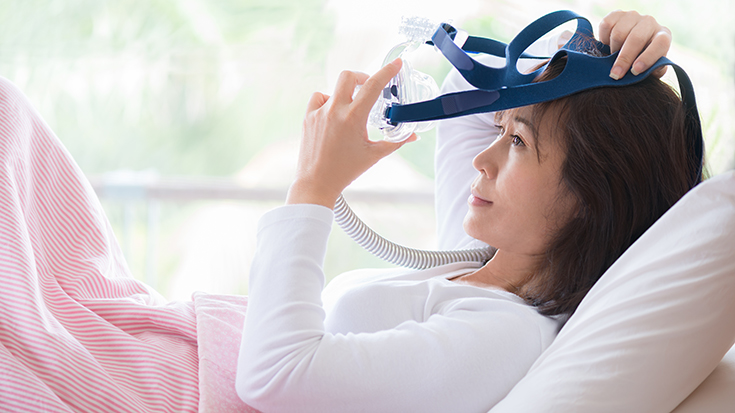
Time to Quit Blaming the Cytokine Storm?
We’ve heard a lot about how the “cytokine storm” was responsible for many deaths during the pandemic. But was it?
Researchers from Northwestern University, who conducted a study using machine learning believe the real culprit was secondary bacterial pneumonia related to mechanical ventilation.
The study was conducted among 585 patients admitted to the ICU at Northwestern Memorial Hospital with severe pneumonia and respiratory failure. Among that group, 190 also had COVID-19. A novel machine learning technique called CarpeDiem was used to group patients into clinical states using electronic health record data.
The researchers found that among the COVID-19 patients who required mechanical ventilation, nearly half also suffered from a secondary bacterial pneumonia. That bacterial pneumonia was identified as a significant cause of death by the machine learning technique, with fatality rates that likely surpassed those of the viral illness.
“According to our findings, individuals who recovered from their secondary pneumonia had a higher probability of survival, whereas those whose pneumonia did not improve had a greater likelihood of mortality,” said study author Dr. Benjamin Singer. “Our data indicated that the fatality rate linked to the virus is relatively low, but other factors that occur during an ICU stay, such as secondary bacterial pneumonia, negate this.”
Dr. Singer says the study refuted the concept of the cytokine storm because the cytokine storm refers to excessive inflammation leading to organ failure in multiple parts of the body. “If this were the case and the cytokine storm were responsible for the prolonged hospitalization observed in COVID-19 patients, we would anticipate frequent progression to conditions characterized by multiple organ failure,” he said. “However, our findings do not support this.”
The study was funded by the Simpson Querrey Lung Institute for Translational Sciences and a grant from the National Institute of Allergy and Infectious Diseases. It was published by the Journal of Clinical Investigation. Read More

Racial Disparities in Care for Sepsis, Acute Respiratory Failure
According to researchers publishing in JAMA Open Network, racial disparities are common when it comes to treating sepsis and acute respiratory failure (ARF) but differences exist among various racial groups.
The University of Pennsylvania investigators looked at 102,362 adult patients who were treated at 27 acute care teaching and community hospitals in Philadelphia and northern California between January 2013 and December 2018. Ethnic minority patients were matched with white patients with similar clinical characteristics to gauge differences in care.
Among the findings –
- Black patients had significantly longer hospital stays than their white counterparts in regards to both sepsis (median difference 1.26 days) and ARF (median difference 0.97 days).
- Compared with white patients, shorter hospital stays were seen among Hispanic patients for both sepsis (mean difference −0.22 days) and ARF (mean difference −0.47 days).
- Shorter stays were seen for Asian American and Pacific Islander patients who had ARF as well, with a mean difference of −0.61 days.
The authors note their findings were adjusted to take factors such as clinical presentation characteristics, hospital capacity strain, initial ICU admission, and the occurrence of inpatient death, into account. They believe the results suggest previously identified factors do not completely account for length of stay disparities in people with sepsis or ARF. Other factors, including socioeconomic factors relevant to presentation and discharge care coordination, may be coming into play. Read More

Helmet CPAP May Outperform Facemask CPAP
COVID-19 patients receiving helmet CPAP had a lower need for intubation and were less likely to die than those receiving CPAP via a facemask in a study conducted by researchers from Argentina that was published in CHEST.
The study compared outcomes for 112 ICU patients with similar baseline characteristics who had developed acute hypoxemic respiratory failure related to COVID-19 and were treated between June 2020 and September 2021 with either helmet or facemask CPAP. All the patients had had a failed response to high-flow nasal oxygen and 55 chose subsequent treatment with helmet CPAP. Fifty-seven chose treatment with facemask CPAP.
All patients received CPAP for 24 hours at 10 cm H2O and FIO2 to keep SpO2 at 92% to 96%. From there, the patients received rotation therapy involving CPAP and high-flow nasal oxygen.
Patients who used the helmet had more hours on CPAP than those who used the facemask, 221 vs. 151, and they also had an elevated median PEEP, 14 cm H2O vs. 10 cm H2O, and median SpO2/FIO2 after CPAP, 251 vs. 187. A higher median respiratory rate was seen in facemask patients, 25 vs. 22.
Most importantly, fewer helmet CPAP patients required endotracheal intubation, 29% vs. 49%, and more facemask patients had hypoxemia noted as the reason for their intubation, 18% vs. 5%. Overall, 18% of the helmet CPAP patients died vs. 35% of those receiving facemask CPAP.
“Despite the nonrandomized design of this investigation and the small sample analyzed, these findings suggest a possible clinical benefit of helmet over facemask CPAP in patients with COVID-19 respiratory failure,” concluded the authors. “Further randomized studies systematically assessing the clinical effects of helmet CPAP in COVID-19 and in other hypoxemic patients appear warranted to foster its use in other ICUs.” Read More





